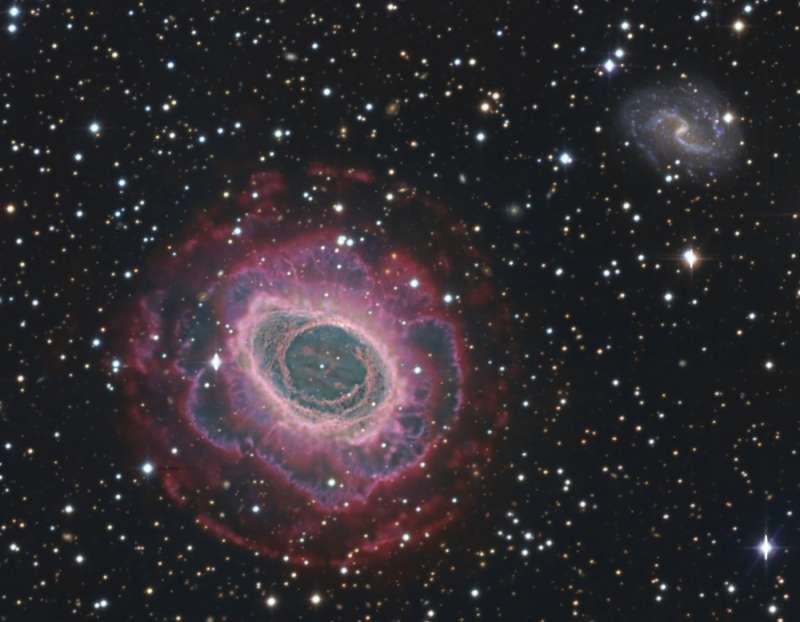
|
Credit: Vicent Peris
(DSA /
OAUV /
PixInsight),
Jack Harvey
(DSA /
SSRO),
Steve Mazlin (DSA / SSRO), Jose Luis Lamadrid (DSA / ceFca), Ana Guijarro (CAHA), RECTA, DSA.
Explanation:
A familiar sight to sky enthusiasts with even a small telescope,
the Ring
Nebula (M57) is
some 2,000 light-years away in the musical
constellation
Lyra.
The central ring is about one light-year across,
but this remarkably deep exposure -
a collaborative effort combining data from three different telescopes -
explores
the looping filaments
of glowing gas extending much farther from the nebula's
central star.
Of course, in this
well-studied
example of a
planetary nebula,
the glowing material does not come from planets.
Instead,
the gaseous shroud represents outer layers
expelled from a dying, sun-like star.
This remarkable composite image includes narrowband image data
recording the Ring's atomic hydrogen emission (shown as violet)
in visible light and molecular hydrogen emission (shown as red)
at near infrared wavelengths.
The much more distant spiral
galaxy IC 1296 is also visible at the upper right.
Steve Mazlin (DSA / SSRO), Jose Luis Lamadrid (DSA / ceFca), Ana Guijarro (CAHA), RECTA, DSA.
|
January February March April May June July August September October November December |
| |||||||||||||||||||||||||||||||||||||||||||||||||||||||
NASA Web Site Statements, Warnings, and Disclaimers
NASA Official: Jay Norris. Specific rights apply.
A service of: LHEA at NASA / GSFC
& Michigan Tech. U.
Based on Astronomy Picture
Of the Day
Publications with keywords: Ring Nebula - deep field
Publications with words: Ring Nebula - deep field
See also:
